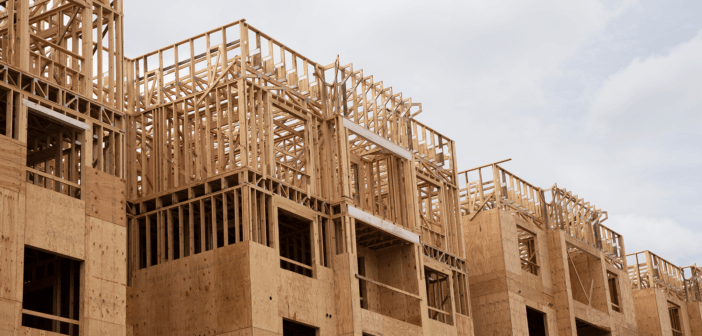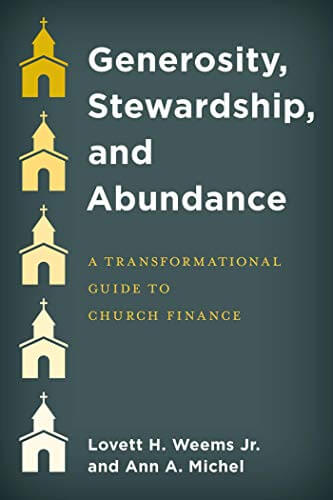Richard Reinhard says pairing the surplus of faith properties with the deficit of affordable housing appears to be a match made in heaven. Yet common barriers often stand in the way. He suggests five adjustments that faith institutions, municipalities, and the real estate industry can make to realize this opportunity.
A tsunami of emptying houses of worship—up to 100,000 according to one religious source—is washing across America. Developing intelligent reuses and redevelopments for these properties will make the difference between a community flourishing and struggling. Housing advocates view underused faith properties as natural sites to develop projects that help close the great national gap on affordable housing.
Pairing the surplus of faith properties with the deficit of affordable housing appears to be a match made in heaven. Although America could already boast several successful affordable housing projects in and around former faith properties over the past decades, there’s a renewed interest in church-to-housing among faith communities, municipalities, the real estate industry, and not-for-profits.
Barriers to overcome
Barriers to conversion strategies exist. All too often houses of worship are stricken immobile by their declining congregations. Convincing an elderly congregation to close or even alter the sacred places where they were married, their parents were memorialized, and their children were baptized can be a heavy lift. Faith leaders are schooled in neither real estate nor finance in divinity schools, and sometimes find it anathema to their beliefs.
Municipalities are handcuffed by outdated zoning ordinances, building codes, and property-tax regulations that assume vital houses of worship, not struggling properties. NIMBY neighbors fear turning a peaceful-if-struggling house of worship into a multifamily, mixed-use development, professing fears of noise, traffic, and public safety.
Real estate professionals are impatient with torturous negotiations with faith institutions and uneven regulation by municipalities, as time is money. Graveyards on faith properties and reversionary clauses in church deeds can add even more complications.
Yet the opportunities can outweigh the threats. The Terner Center of Housing Innovation at the University of California at Berkeley estimates that in California alone, faith-based organizations and not-for-profit colleges own more than 170,000 acres of land that could be developed into affordable housing or other uses—five times the size of the City of Oakland.
Five necessary adjustments
As excellent as some individual house-of-worship reuse and redevelopment projects have proved to be, the vast number of emptying churches—and the accompanying need for affordable housing—suggest that the public, private, and not-for-profit sectors need to adjust to deliver the breadth and depth of projects that are necessary.
1. Embrace the huge scope of the problem.
What empty department stores were to communities over the past 3-4 decades, emptying houses of worship are over the next couple of decades, only the challenges are wider, more intense, and more problematic. As much as we should celebrate local victories (most in hot real-estate markets), the giant scope of the challenge requires resources—people, time, and money—on a grander scale.
2. Transition faith institutions into the real-estate business.
They own billions of dollars’ worth of real estate but manage most of it as an afterthought. We need to convince faith institutions to be as much in the real estate business as in the religion business.
3. Develop a new model for houses of worship.
Using large properties only once or twice a week is a bad use of valuable resources. According to urbanist Jane Jacobs, Great American cities embrace four factors: a mix of uses, short blocks, aged buildings, and high densities. Houses of worship that are unwelcoming, single-use, fenced-in fortresses should be a thing of the past.
4. Update municipal regulations.
Municipalities regulate reuse and redevelopment of houses of worship through zoning regulations, building codes, and historic preservation ordinances. Many are outdated and assume the healthy, single-use houses of worship of times past. States desperate for affordable housing have begun to show their frustrations with local governments by passing legislation that overrides local laws.
5. Provide incentives.
Faith-related redevelopment projects require government incentives at the local, state, and federal levels. Most traditional affordable housing developments require a Rubik’s Cube of several funding sources—grants, loans, tax credits, land write-downs, and the like—and much of the funding is hard to come by. With its further complications, redeveloping a house of worship requires even more.
This article is adapted from “Affordable Housing: YIGBY (“Yes In God’s Backyard”) Movement Seeks To Counter NIMBY Movement,”, Urban Land, February 20, 2024. Reprinted with permission of the Urban Land Institute.
Related Resources
- 9 Lessons from Nehemiah for Faith-based Property Development by David Bowers
- Negotiating the Coming Wave of Church Property Transitions featuring Mark Elsdon — Leading Ideas Talks podcast video | Podcast audio version | In-depth interview
- 7 Dos and Don’ts When Considering the Redevelopment of Church Property by Rick Reinhard







